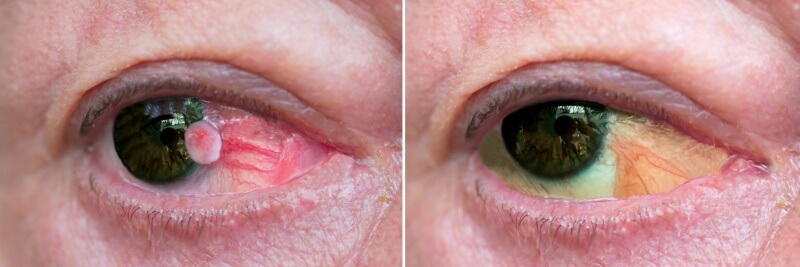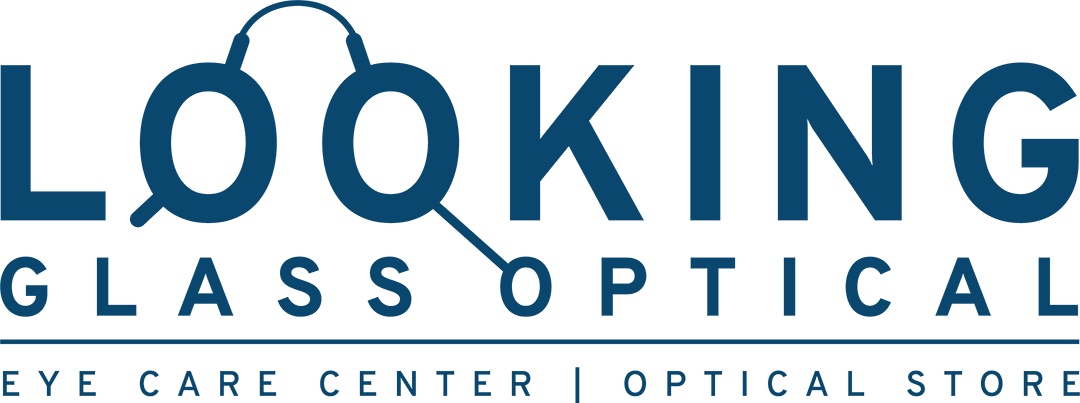What is a Pterygium a.k.a Surfer’s Eye?
Pterygium, commonly known as Surfer’s Eye, is a benign growth of the conjunctiva—the clear, thin tissue that lies over the white part of the eye and lines the inside of the eyelid. This growth typically starts on the nasal side of the eye and extends toward the cornea, the eye’s clear front surface. While the name “Surfer’s Eye” suggests a condition exclusive to surfers, it can affect anyone who spends significant time outdoors in sunny, dusty, or windy environments.
Overview of Surfer’s Eye

Causes and Risk Factors
Pterygium is primarily caused by prolonged exposure to ultraviolet (UV) light. People who live in sunny climates and spend much time outdoors are at higher risk. Other contributing factors include chronic eye irritation from wind, dust, or sand. This condition is more common in adults aged 20-50, and men are slightly more likely to develop it than women. While the exact cause is not entirely understood, UV light’s role in causing cellular damage is significant.
Symptoms
Symptoms of pterygium can vary. In its early stages, it might not cause any noticeable symptoms. However, as it progresses, it can cause redness, inflammation, and a gritty or itchy sensation in the eye. The growth can sometimes become large enough to cover the cornea, leading to vision impairment. This is particularly concerning if it obstructs the pupil, the eye’s central aperture for light entry.
Diagnosis
Diagnosing pterygium typically involves a comprehensive eye exam. An eye care professional will use a slit lamp, a microscope designed for examining the eye’s structures, to inspect the growth and determine its size and extent. We take photographs to monitor its progression over time. It’s essential to differentiate pterygium from similar conditions, such as pinguecula—a yellowish, raised growth on the conjunctiva that does not extend onto the cornea.
Treatment
Treatment options for pterygium depend on the severity and symptoms. Eye drops or ointments may be prescribed for mild cases to reduce inflammation and irritation. Artificial tears can also help alleviate dryness and discomfort. Surgical removal may be necessary if the pterygium grows large enough to cause vision problems or significant discomfort. The procedure involves excising the growth and may include a graft to reduce the likelihood of recurrence. Despite surgery, there’s a chance that pterygium can recur, especially if the patient continues to be exposed to UV light without proper eye protection.
Prevention
Preventing pterygium involves protecting the eyes from UV light and environmental irritants. Here are some preventive measures:
- Wear Sunglasses: Choose sunglasses that block 100% of UVA and UVB rays. Wraparound styles offer additional protection by preventing UV rays from entering from the sides.
- Use Hats: A wide-brimmed hat can reduce the amount of UV light reaching your eyes by up to 50%.
- Artificial Tears: Artificial tears can moisten the eyes and reduce irritation from wind and dust.
- Avoid Environmental Irritants: Avoid exposure to dusty, sandy, or smoky environments. If exposure is unavoidable, use protective eyewear.
Living with Pterygium
Living with pterygium requires some lifestyle adjustments to manage symptoms and prevent further growth. Regular eye check-ups are crucial to monitor the condition and address any changes promptly. Incorporating protective measures into daily routines can significantly reduce the risk of progression for those with active lifestyles or outdoor occupations.
Pterygium, or Surfer’s Eye, is a condition that underscores the importance of eye protection in preventing UV light damage. While it is a benign growth, its potential to impair vision and cause discomfort makes early detection and preventive measures vital. By understanding the causes, symptoms, and treatment options, individuals can take proactive steps to protect their eye health and maintain their quality of life. Whether you’re a surfer or enjoy spending time outdoors, safeguarding your eyes from UV exposure is critical to preventing pterygium and other related conditions.
Why Choose Looking Glass Optical?
At Looking Glass Optical, we specialize in restoring clarity and comfort to your vision, especially for those affected by conditions like pterygium, commonly known as surfer’s eye. Our dedicated team offers:
- Expert Diagnosis and Care: Our optometrists conduct thorough eye exams to detect and manage pterygium early, ensuring proactive treatment.
- Cutting-Edge Technology: We utilize advanced diagnostic tools to provide precise assessments and tailored treatment plans to address your specific eye health needs.
- Safe Eyewear Solutions: Explore our wide range of sunwear designed to protect your vision. Our sunglasses all have UVA & UVB protection.
- Personalized Approach: We prioritize understanding your unique vision challenges and preferences, offering customized solutions for optimal comfort and visual clarity.
Don’t let pterygium affect your vision quality. Schedule your appointment at Looking Glass Optical today and take the first step toward clearer, healthier eyes.
Share
